Family
 Obscene language has not always been the norm where language is concerned, and in fact I don’t think most people talked that way even in the not so distant past of the Old West…certainly not in the way Hollywood would have us believe. Those were different times, and to hear the actors dropping the “f bomb” or the “s word” would be…almost laughable if it weren’t for the fact that it should be insulting. I’m not prudish, and I know that things have changed over the years, but when I hear someone cussing at their children, or using cuss words as, just another part of the conversation, I am sometimes shocked and offended. I don’t like to be one of those people who are offended by just everything, but perhaps if we were offended by obscene language, some of the much more shocking things that go on in our world wouldn’t be happening at all. When the Dick Van Dyke Show was on television, the couple had twin beds and the word pregnant couldn’t even be said on television. We all knew that most couples don’t have separate beds or separate rooms, but it went to show the more wholesome, clean cut, decent world we lived in then.
Obscene language has not always been the norm where language is concerned, and in fact I don’t think most people talked that way even in the not so distant past of the Old West…certainly not in the way Hollywood would have us believe. Those were different times, and to hear the actors dropping the “f bomb” or the “s word” would be…almost laughable if it weren’t for the fact that it should be insulting. I’m not prudish, and I know that things have changed over the years, but when I hear someone cussing at their children, or using cuss words as, just another part of the conversation, I am sometimes shocked and offended. I don’t like to be one of those people who are offended by just everything, but perhaps if we were offended by obscene language, some of the much more shocking things that go on in our world wouldn’t be happening at all. When the Dick Van Dyke Show was on television, the couple had twin beds and the word pregnant couldn’t even be said on television. We all knew that most couples don’t have separate beds or separate rooms, but it went to show the more wholesome, clean cut, decent world we lived in then.

By the 1920s, it seemed to begin to be understood that men, anyway, were going to use foul language at times, but they had better watch their mouth in front of the ladies, because it was a law that they not offend those ladylike ears with such harsh words. In fact, on October 8, 1921, a man was charged of speaking offensively in front of a lady and found guilty for using obscene language in front of a woman in Ohio. Now, if you could be fined or sent to spend a few days in jail for using foul language in front of a woman, I think people would be much more likely to watch their tongue. In my parents home, foul language would result in having your mouth washed out with soap. I guess that somehow Mom thought that would clean up the language, and in reality, it did. I don’t say that my sisters and I never used cuss words as teenagers, because everyone goes through rebellious times, but I can tell you that we did not do it in front of our parents, and our boyfriends were told that they had better not talk that way either, if they wanted to continue to date our parents daughter. Cussing was one of the fastest ways for a guy to get on the wrong side of our parents.

These days, it seems that everyone cusses, including children. I hear some of the things coming out of the mouths of little kids, and I almost can’t help having my jaw drop to the floor. Television shows consider some language as being acceptable, and then amazingly they bleep out other words that are not any worse than the ones they have allowed. Obscene gestures are the normal way to tell everyone in sight that you are not happy with what is going on around you, and screaming obscenities is the newest way to express your disgust. Some people have wondered if “swearing is a sign of a limited vocabulary” or is it just a way of “obscenitizing” our world. Either way I find that the loss of eloquent speech is very sad indeed.
 When a river is as wide as the Mississippi, and traveling through so many states, often through flat land, the potential for flooding always exists. I know that many people who live along the Mighty Mississippi, would never consider living anywhere else. They love that old river, and having been there myself, I can certainly understand why. The river views are beautiful. Still, the yearly potential for flooding is something that might put many people off, when it comes to living on the shores of that river. Of course, people can get flood insurance, and indeed, most banks would require it for properties along that river, but the possessions lost in floods, not to mention the time it takes to rebuild the homes, and especially the lives lost in floods, make living on the shores of the Mississippi something that I would probably not decide to do.
When a river is as wide as the Mississippi, and traveling through so many states, often through flat land, the potential for flooding always exists. I know that many people who live along the Mighty Mississippi, would never consider living anywhere else. They love that old river, and having been there myself, I can certainly understand why. The river views are beautiful. Still, the yearly potential for flooding is something that might put many people off, when it comes to living on the shores of that river. Of course, people can get flood insurance, and indeed, most banks would require it for properties along that river, but the possessions lost in floods, not to mention the time it takes to rebuild the homes, and especially the lives lost in floods, make living on the shores of the Mississippi something that I would probably not decide to do.
The Great Mississippi Flood of 1927 was the most destructive river flood in the history of the United States,  with 27,000 square miles inundated up to a depth of 30 feet. To try to prevent future floods, the federal government built the world’s longest system of levees and floodways. Of the more than 630,000 people affected by the flood, 94% lived in the states of Arkansas, Mississippi, and Louisiana, most in the Mississippi Delta. By August 1927, the flood subsided. Hundreds of thousands of people had been made homeless and displaced…properties, livestock and crops were destroyed. Some people left the area, because they did not have the money, or the stomach for living in an area where their homes could so easily be wiped out. Still, the draw of the beautiful Mississippi kept many people there, determined to rebuild their lives. Of course, the flood didn’t only affect the people living along the Mississippi. Lost crops affected many people in the United States. It was a disaster of epic proportions.
with 27,000 square miles inundated up to a depth of 30 feet. To try to prevent future floods, the federal government built the world’s longest system of levees and floodways. Of the more than 630,000 people affected by the flood, 94% lived in the states of Arkansas, Mississippi, and Louisiana, most in the Mississippi Delta. By August 1927, the flood subsided. Hundreds of thousands of people had been made homeless and displaced…properties, livestock and crops were destroyed. Some people left the area, because they did not have the money, or the stomach for living in an area where their homes could so easily be wiped out. Still, the draw of the beautiful Mississippi kept many people there, determined to rebuild their lives. Of course, the flood didn’t only affect the people living along the Mississippi. Lost crops affected many people in the United States. It was a disaster of epic proportions.
Then came the floods of the Mississippi and Missouri rivers in 1993, also known as the Great Flood of 1993. This is one that many of us alive today remember, mostly because we were old enough to remember, but also because the television and newspapers were filled with the stories of destruction. The flood was among the most costly and devastating to ever occur in the United States, with $15 billion in damages. The damage area  was more than 745 miles in length and 435 miles in width, totaling about 320,000 square miles. Within this zone, the flooded area totaled around 30,000 square miles and was the worst such US disaster since the Great Mississippi Flood of 1927, as far as duration, area flooded, persons displaced, crop and property damage, and number of record river levels. In some ways, the 1993 flood even surpassed the 1927 flood, which was, at the time, the largest flood ever recorded on the Mississippi River. The effects were felt by people all over the United States because of crops lost, the rise in the cost of building materials, and of course, insurance rates as a result of increased building material prices. Floods are nearly impossible to prevent, and for some people they are considered a risk they are willing to take, but for me, I think I’ll stick to places where the chance of a flood hitting my home is almost nil. On October 7, 1993, the Great Flood of 1993 came to an end as the Mississippi River finally started to recede, 103 days after the flooding began.
was more than 745 miles in length and 435 miles in width, totaling about 320,000 square miles. Within this zone, the flooded area totaled around 30,000 square miles and was the worst such US disaster since the Great Mississippi Flood of 1927, as far as duration, area flooded, persons displaced, crop and property damage, and number of record river levels. In some ways, the 1993 flood even surpassed the 1927 flood, which was, at the time, the largest flood ever recorded on the Mississippi River. The effects were felt by people all over the United States because of crops lost, the rise in the cost of building materials, and of course, insurance rates as a result of increased building material prices. Floods are nearly impossible to prevent, and for some people they are considered a risk they are willing to take, but for me, I think I’ll stick to places where the chance of a flood hitting my home is almost nil. On October 7, 1993, the Great Flood of 1993 came to an end as the Mississippi River finally started to recede, 103 days after the flooding began.
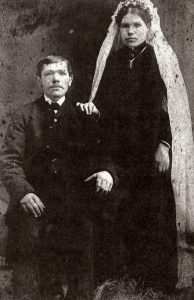 My great grandparents, Henriette and Carl Schumacher were both of German descent. They both came to America at different times…Grandma in 1882 and Grandpa in 1884. They met at a baptism and fell in love. They were married, and had 7 children, one of whom died as a little girl. They were just two of the many German people who have come to this country as far back as the colonial days. Of course, there were many German people who came here before my great grandparents. One of the most notable groups was the 13 German Mennonite families from Krefeld who landed in Philadelphia. These families founded Germantown, Pennsylvania on October 6, 1683. The settlement was the first German establishment in the original thirteen American colonies.
My great grandparents, Henriette and Carl Schumacher were both of German descent. They both came to America at different times…Grandma in 1882 and Grandpa in 1884. They met at a baptism and fell in love. They were married, and had 7 children, one of whom died as a little girl. They were just two of the many German people who have come to this country as far back as the colonial days. Of course, there were many German people who came here before my great grandparents. One of the most notable groups was the 13 German Mennonite families from Krefeld who landed in Philadelphia. These families founded Germantown, Pennsylvania on October 6, 1683. The settlement was the first German establishment in the original thirteen American colonies.
There are many people in the United States who can trace their ancestry back to German roots in one way or another, and the German-American people have been a building block in this nation. These were people who wanted to come here for a better  life, or to escape some of the horrors of the German government, and I for one am thankful that my grandparents immigrated to this country. President Ronald Reagan believed that the German-American heritage was so important to this nation, that in 1983, he proclaimed October 6 as German-American Day to celebrate and honor the 300th anniversary of German American immigration and culture to the United States. On August 6, 1987, Congress approved S.J. Resolution 108, designating October 6, 1987, as German-American Day. It became Public Law 100-104 when President Reagan signed it on August 18, 1987. Proclamation number 5719 was issued on October 2, 1987, by President Reagan in a formal ceremony in the White House Rose Garden, at which time the President called on Americans to observe the Day with appropriate ceremonies and activities. Now for many people, that might include German beer, as well as Oktoberfest activities…basically a party.
life, or to escape some of the horrors of the German government, and I for one am thankful that my grandparents immigrated to this country. President Ronald Reagan believed that the German-American heritage was so important to this nation, that in 1983, he proclaimed October 6 as German-American Day to celebrate and honor the 300th anniversary of German American immigration and culture to the United States. On August 6, 1987, Congress approved S.J. Resolution 108, designating October 6, 1987, as German-American Day. It became Public Law 100-104 when President Reagan signed it on August 18, 1987. Proclamation number 5719 was issued on October 2, 1987, by President Reagan in a formal ceremony in the White House Rose Garden, at which time the President called on Americans to observe the Day with appropriate ceremonies and activities. Now for many people, that might include German beer, as well as Oktoberfest activities…basically a party.
 The Germantown, Pennsylvania, settlers organized the first petition in the English colonies to abolish slavery in 1688. Originally known as German Day, the holiday was celebrated for the first time in Philadelphia in 1883, on the occasion of the 200th anniversary of the arrival of the settlers from Krefeld. Similar celebrations developed later in other parts of the country, but the custom died out during World War I as a result of the anti-German sentiment that prevailed at the time. Then, in 1983, President Reagan decided that the time had come to reinstate it. I think it’s a good thing, because those German people who left Germany, were not like the German government was. They were truly good people, who were good for this nation.
The Germantown, Pennsylvania, settlers organized the first petition in the English colonies to abolish slavery in 1688. Originally known as German Day, the holiday was celebrated for the first time in Philadelphia in 1883, on the occasion of the 200th anniversary of the arrival of the settlers from Krefeld. Similar celebrations developed later in other parts of the country, but the custom died out during World War I as a result of the anti-German sentiment that prevailed at the time. Then, in 1983, President Reagan decided that the time had come to reinstate it. I think it’s a good thing, because those German people who left Germany, were not like the German government was. They were truly good people, who were good for this nation.
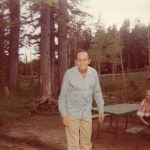
 My dad’s younger sister, Ruth Spencer married a man named Lester Alonzo Wolfe…who went by Jim, and I truly can’t imagine him as Lester. He was Uncle Jim, and he was truly a kid at heart. He could be serious when he had to be, but that was not his real nature. Uncle Jim and my dad, Allen Spencer were good friends, more than brothers-in-law usually are. They were more like brothers, and what one didn’t think of, the other one did!! When the two of them got together, all bets were off. They came up with the craziest things, from antics to dinners. You never knew what they would do next.
My dad’s younger sister, Ruth Spencer married a man named Lester Alonzo Wolfe…who went by Jim, and I truly can’t imagine him as Lester. He was Uncle Jim, and he was truly a kid at heart. He could be serious when he had to be, but that was not his real nature. Uncle Jim and my dad, Allen Spencer were good friends, more than brothers-in-law usually are. They were more like brothers, and what one didn’t think of, the other one did!! When the two of them got together, all bets were off. They came up with the craziest things, from antics to dinners. You never knew what they would do next.
Uncle Jim genuinely loved my sisters and me, and as we grew up and got married and had children, he loved our kids, too. He was so much like our Dad in that way. He always loved having kids around, and in response to all of us kids teasing him and cajoling him, he always obliged us by teasing and cajoling back. I suppose that had to do with the kid he was inside. Laughter was not something you saw in him once in a while, it was the norm with Uncle Jim. It didn’t matter where we were, or what we were doing…in the house, outside, on camping trips, or country drives, which we made often when they were in town…he was just so much fun! He and our Aunt Ruth both were, but he and Dad were such big kids themselves, that when they got together, they could relate to our need to have that fun interaction with our Dad and our uncle. They reveled in it, and it made them both very happy. They played well off of each other. Their fun attitudes and ways were contagious! And we all loved it!
Uncle Jim’s nature was good, clean, and fun-loving, and he had a kind heart. He would give us anything we asked for, if he could. If he bought a treat, it was for everyone. If there was a game to be played, everyone could play, and if there was an underdog, he was their champion! No one ever felt left out because of the inability to keep up with the better players, and none of us felt like we wished he wouldn’t do that. I think it taught us to be understanding of everyone…not just the best players. Uncle Jim thought nice thoughts, and then put them into nice actions. He didn’t have a mean bone in his body.
Uncle Jim’s stories were the best and the most interesting. He could sure tell them, whether they were the truth or some of the great whoppers he told, that we, of course believed. Sometimes I think the whoppers were the best…things like walking ten miles in the snow, barefoot, and uphill both ways. Those were the kind of stories they told us, and we were gullible enough to believe. He could tell a story better than anyone we knew. We loved having Uncle Jim and Aunt Ruth come to visit, and they loved surprising us. They often just popped in…from several states away, making popping in a planned event. When they came to visit, it was truly the happiest time for my sisters and me! They brought happiness and fun with them. Whatever our family may have been doing, we gladly stopped doing, for the entire time they were here. We just had fun with Uncle Jim, Aunt Ruth, and whichever of their children came with them.
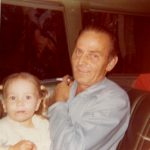
My sister, Cheryl, who helped me with some of these great memories, the rest of my sisters and I, don’t have one bad memory of Uncle Jim. He was simply a good-hearted man who, though he was married to our Dad’s sister, could not have loved us any more if we had been his own blood, and he always let us know that fact. You don’t often find that in an uncle, and we love and treasure him still today, and always will!! Happy birthday in Heaven Uncle Jim.
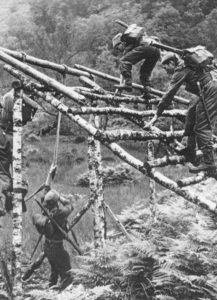
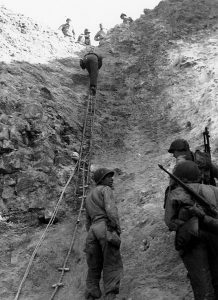 These days, everyone has heard of the special forces units and special ops, which is special operations. The main reasons we know about them are terrorism, and war in the current world. Special forces and special operations forces are military units trained to conduct the kinds of operations that are often much more dangerous than even the boots on the ground part of battle. NATO defines special operations as “military activities conducted by specially designated, organized, trained, and equipped forces, manned with selected personnel, using unconventional tactics, techniques, and modes of employment”. In other words, these are the guys who go into ugly situations in an effort to keep us safe. Of course, this, in no way, detracts from our first responders, who we all know are just as vital. There is just a difference in the scope of their jobs. The Special Forces emerged in the early 20th century, with a significant growth in the field during the World War II, when “every major army involved in the fighting” created formations devoted to special operations behind enemy lines. It was going to be the only way to win such a war.
These days, everyone has heard of the special forces units and special ops, which is special operations. The main reasons we know about them are terrorism, and war in the current world. Special forces and special operations forces are military units trained to conduct the kinds of operations that are often much more dangerous than even the boots on the ground part of battle. NATO defines special operations as “military activities conducted by specially designated, organized, trained, and equipped forces, manned with selected personnel, using unconventional tactics, techniques, and modes of employment”. In other words, these are the guys who go into ugly situations in an effort to keep us safe. Of course, this, in no way, detracts from our first responders, who we all know are just as vital. There is just a difference in the scope of their jobs. The Special Forces emerged in the early 20th century, with a significant growth in the field during the World War II, when “every major army involved in the fighting” created formations devoted to special operations behind enemy lines. It was going to be the only way to win such a war.
Special Forces teams perform some dangerous functions, including airborne operations, counter-insurgency, counter-terrorism, foreign internal defense, covert ops, direct action, hostage rescue, high-value targets/manhunting, intelligence operations, mobility operations, and unconventional warfare. In the United States, Special Forces refers to the US Army, Navy, Air Force, and Marine forces. The jobs of the Special Forces units are vital in today’s kind of warfare. Special Forces do reconnaissance and surveillance in hostile environments trying to make it safer to send in the troops. They are in charge of foreign internal defense…training and development of other states’ military and security forces, offensive action, support to counter-insurgency through population engagement and support counter-terrorism operations, sabotage, and demolition, as well as, hostage rescue. They are also used as body guards, in waterborne operations involving combat diving, combat swimming, maritime boarding and amphibious missions, as well as support of air force operations. Special forces have played an important role throughout the history of warfare, whenever the aim was to achieve disruption by “hit and run” and sabotage, rather than more traditional conventional combat. Other significant roles lay in reconnaissance, providing essential intelligence from near or among the enemy and increasingly in combating irregular forces, their infrastructure, and their activities. Originally there were separate units for the different branches of the military, but the need for interoperability between these units from the different services led to the formation US Special Operations Command (USSOCOM) in 1987. Our cousin Paul Noyes career in Special Operations was with Ranger, Special Forces and Aviation Special Ops forces, and he has become my military “go to” guy…letting me know if I hit the nail on the head or missed it.
For some reason, I thought Special Forces was, for the most part, a modern day unit, but that isn’t really true. Chinese strategist Jiang Ziya, in his Six Secret Teachings, described recruiting talented and motivated men into specialized elite units with functions such as commanding heights and making rapid long-distance advances. King David had a special forces platoon known as Gibborim. In Japan, ninjas were used for reconnaissance, espionage and as assassins, bodyguards or fortress guards, or otherwise fought alongside conventional soldiers. During the Napoleonic wars, rifle and sapper units were formed that held specialized roles in reconnaissance and skirmishing and were not committed to the formal battle lines. The British Indian Army 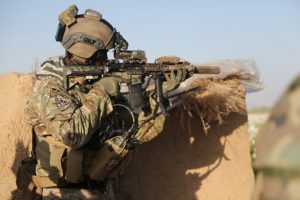
 deployed two special forces during their border wars…the Corps of Guides formed in 1846 and the Gurkha Scouts…a force that was formed in the 1890s and was first used as a detached unit during the 1897–1898 Tirah Campaign. I guess that the Special Forces units are long standing, expertly trained groups of very special people, who have achieved a level of expertise that is second to none, and I for one, and thankful that such soldiers exist.
deployed two special forces during their border wars…the Corps of Guides formed in 1846 and the Gurkha Scouts…a force that was formed in the 1890s and was first used as a detached unit during the 1897–1898 Tirah Campaign. I guess that the Special Forces units are long standing, expertly trained groups of very special people, who have achieved a level of expertise that is second to none, and I for one, and thankful that such soldiers exist.
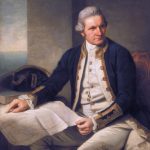 While visiting Alaska a few years ago, Bob and I kept hearing about Captain James Cook. I suppose I had probably heard a little about him at one point or another during my school years, but as often happens with kids, I wasn’t really interested…at least not until I saw Alaska for myself. Then, the places that were discussed in history actually came to life, because I was there in person. In reality, Captain Cook had a direct impact on several areas of the west coast of the United States, including the Puget Sound in Washington and areas of Oregon. Cook’s two ships, the Discovery and Resolution, had worked their way northwest from what is now Oregon and Puget Sound, along the British Columbia and Alaska coast, hoping to find the long sought after Northwest Passage to Europe.
While visiting Alaska a few years ago, Bob and I kept hearing about Captain James Cook. I suppose I had probably heard a little about him at one point or another during my school years, but as often happens with kids, I wasn’t really interested…at least not until I saw Alaska for myself. Then, the places that were discussed in history actually came to life, because I was there in person. In reality, Captain Cook had a direct impact on several areas of the west coast of the United States, including the Puget Sound in Washington and areas of Oregon. Cook’s two ships, the Discovery and Resolution, had worked their way northwest from what is now Oregon and Puget Sound, along the British Columbia and Alaska coast, hoping to find the long sought after Northwest Passage to Europe.
In early June 1778, Captain Cook and his men were in the Cook Inlet, hoping it would lead to the imagined passageway to Europe. It didn’t, of course, but once again Cook sent his crew exploring in small boats. Their adventures there led to the naming of Turnagain Arm, which Captain Cook originally called River Turnagain. It was so named because it was a disappointing “turn again” for Cook’s crew. The problem they were having was because Turnagain is subject to climate extremes and large tide ranges. During high tide, taking a boat in is simple, but if you don’t get out before low tide, you will find yourself fighting the quicksand-like mudflats that make up the beaches along Turnagain Arm in low tide.
In the times that Captain Cook was exploring for England, it was customary to name places after places and people in England. The visit to Cook Inlet was part of Cook’s longer exploration of the Alaska coast from which included a stop in Prince William Sound, which Cook named, along with Bligh Reef in the Sound. Bligh Reef would become famous in 1989 when the tanker Exxon Valdez ran aground on it and spilled millions of gallons of crude oil. Prince William Sound, interestingly, was almost named “Sandwich Sound” by Cook after the Earl of  Sandwich in England, and who also, by the way, invented the sandwich as a food item. The Sound was renamed by Cook after Prince William, a descendent of the royal family when his journal was published. Leaving Prince William Sound, Cook ventured west along the Alaska coast to explore further, and after leaving Cook Inlet, he named Bristol Bay after Admiral Earl of Bristol, and Norton Sound after Sir Fletcher Norton, then Speaker of the British House of Commons. As he continued his quest for the Northwest Passage, Cook entered the Chukchi Sea through the Bering Strait and, amazingly, got as far as Icy Cape, on Alaska’s northwest coast, before being stopped by ice. In fact, the two ships were almost trapped by ice the off of Icy Cape.
Sandwich in England, and who also, by the way, invented the sandwich as a food item. The Sound was renamed by Cook after Prince William, a descendent of the royal family when his journal was published. Leaving Prince William Sound, Cook ventured west along the Alaska coast to explore further, and after leaving Cook Inlet, he named Bristol Bay after Admiral Earl of Bristol, and Norton Sound after Sir Fletcher Norton, then Speaker of the British House of Commons. As he continued his quest for the Northwest Passage, Cook entered the Chukchi Sea through the Bering Strait and, amazingly, got as far as Icy Cape, on Alaska’s northwest coast, before being stopped by ice. In fact, the two ships were almost trapped by ice the off of Icy Cape.
During his travels, Captain Cook named many other places, including Mount Edgecumbe and Cape Edgecumbe after George, Earl of Edgecumbe. He broke from protocol in naming Mount Fairweather and Cape Fairweather, using the fact that he had good weather at the time of his exploration, as inspiration for the names. Cross Sound was so named because he found it on May 3, designated on his calendar as Holy Cross day. Cape Suckling was named after Maurice Suckling, comptroller of the Royal Navy when Cook left England. Controller Bay was probably also named after Maurice Suckling, but the Russians translated the name to Zal Kontrolyer on the Hydrogaphy Department Chart 1378, dated 1847, and so it remained Controller Bay. Cape Hinchinbrook was named after Viscount Hinchinbroke. Snug Corner Cove was so named because Captain Cook thought, “And a very snug cove it is.” Montague Island was named after John Montagu, Earl of Sandwiche, the son of Viscount Hinchinbroke. The list of names and their origins goes on and on, but I find these the most interesting.
During his third visit to the Sandwiche Islands, which we now know as Hawaii, Captain James Cook lost his life  in a mob fight with the Hawaiian natives, who wanted one of his boats. As the men came ashore, the Hawaiians greeted Cook and his men by hurling rocks at them. They then stole a small cutter vessel from the Discovery. Negotiations with King Kalaniopuu for the return of the cutter collapsed after a lesser Hawaiian chief was shot to death, and a mob of Hawaiians descended on Cook’s party. The captain and his men fired on the angry Hawaiians, but they were outnumbered. Only a few managed to escape to the safety of the Resolution. Captain Cook was killed by the mob on February 14, 1779. A few days later, the Englishmen retaliated by firing their cannons and muskets at the shore, killing some 30 Hawaiians. The Resolution and Discovery eventually returned to England.
in a mob fight with the Hawaiian natives, who wanted one of his boats. As the men came ashore, the Hawaiians greeted Cook and his men by hurling rocks at them. They then stole a small cutter vessel from the Discovery. Negotiations with King Kalaniopuu for the return of the cutter collapsed after a lesser Hawaiian chief was shot to death, and a mob of Hawaiians descended on Cook’s party. The captain and his men fired on the angry Hawaiians, but they were outnumbered. Only a few managed to escape to the safety of the Resolution. Captain Cook was killed by the mob on February 14, 1779. A few days later, the Englishmen retaliated by firing their cannons and muskets at the shore, killing some 30 Hawaiians. The Resolution and Discovery eventually returned to England.

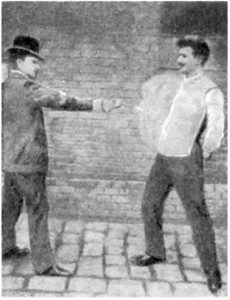 Every new invention has to have its trial run, but some of them might not be so easy to test as others. If you are testing a Frisbee to see if it flies, it is much different than testing a plane to see if it flies. Still, an invention cannot be used, sold, and especially patented without being tested, so testing must be done, and sometimes that can be a little bit dangerous.
Every new invention has to have its trial run, but some of them might not be so easy to test as others. If you are testing a Frisbee to see if it flies, it is much different than testing a plane to see if it flies. Still, an invention cannot be used, sold, and especially patented without being tested, so testing must be done, and sometimes that can be a little bit dangerous.
For many years, police work was extremely dangerous…even more so than it is now. Without some of the protective coverings the officers have today, they could be easily killed in the line of duty…not that they can’t now, but there is a little bit less chance of it these days. Kazimierz Zeglen, was a Polish engineer, born in 1869 near Ternopol. He is credited with inventing the first bulletproof vest. In 1893, after the assassination of Carter Harrison Sr, the mayor of Chicago, he invented the first commercial bulletproof vest. In 1897, he improved it together with Jan Szczepanik who was the inventor of the first commercial bulletproof armor in 1901. It saved the life of Alfonso XIII, the King of Spain…his carriage was covered with Szczepanik’s bulletproof armor when a bomb exploded near it.
When the time came to test the bullet proof vest, a man names Mr Borzykowski, who was a friend of Szczepanik, agreed to test the vest…not on himself, mind you, but on his servant. When he shot his servant, it looks to me like the man braced for death, but he stood in place as he was told to do. It’s kind of like testing a shark suit for the first time. You would have no idea if you would see tomorrow or not. Once the vest was tested, however, it quickly became a valued piece of protective gear for police officers everywhere. The vest worked very well, but the early vests were quite heavy. Through the years, vests have much improved, and will continue to do so, as new materials become available.
When a new lighter vest was demonstrated by the Protective Garment Corporation of New York in 1923, it had to be proven again, because no one was willing to buy these vests sight unseen, so to speak. The gun players were WH Murphy and his assistant. Pictures were taken during a demonstration of the company’s bulletproof vest for DC area police. The live demonstration took place at the Washington city police headquarters. The inventors and salesmen were trying to convince the police force that these bulletproof vests did work and did save lives. The police officers in the background were all part of the Frederick County Police Department, the gun they were firing is believed to be a Smith and Wesson Model 10 Revolver. Mr 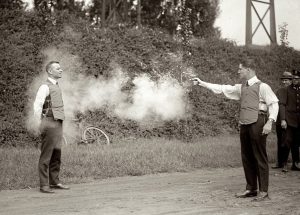
 Murphy stood less than ten feet from the firing gun and took two consecutive .38 round slugs straight to the chest. An eye witnesses claims he “didn’t bat an eye” in both cases. Later Murphy gave the deflected .38 bullet to the police officer as a souvenir. This vest weighed 11 pounds, fit close to the body, and was considered more comfortable than the previous types of bulletproof vests. The bullet proof vest has become standard gear for police officers.
Murphy stood less than ten feet from the firing gun and took two consecutive .38 round slugs straight to the chest. An eye witnesses claims he “didn’t bat an eye” in both cases. Later Murphy gave the deflected .38 bullet to the police officer as a souvenir. This vest weighed 11 pounds, fit close to the body, and was considered more comfortable than the previous types of bulletproof vests. The bullet proof vest has become standard gear for police officers.
 When I think of forms of entertainment, snail racing is about the furthest thing from my mind, but apparently it is a thing. In fact, on October 1, 1954 a ten year old boy named Martin Witter put his snail team through their rounds at a trial race at his home in Lynwood, California. Martin had formed, what he claimed to be, the only snail stable in the country. Every afternoon the snails were awakened for their trial runs by being placed in the sun. As the sunshine began to penetrate their shells, the snails came to life. On top of the racing snail’s shell, Martin had glued a tiny yoke made from a matchstick. The reins, made of string, were connected to a small simulated Roman chariot constructed from a fish food tin in which the snail driver sits. Speedy, in the harness and Butch, in the “Chariot” beat a neighborhood entry establishing a new track record of 3 feet in 5 minutes…not bad for a couple of racers, who we all know travel at a snail’s pace.
When I think of forms of entertainment, snail racing is about the furthest thing from my mind, but apparently it is a thing. In fact, on October 1, 1954 a ten year old boy named Martin Witter put his snail team through their rounds at a trial race at his home in Lynwood, California. Martin had formed, what he claimed to be, the only snail stable in the country. Every afternoon the snails were awakened for their trial runs by being placed in the sun. As the sunshine began to penetrate their shells, the snails came to life. On top of the racing snail’s shell, Martin had glued a tiny yoke made from a matchstick. The reins, made of string, were connected to a small simulated Roman chariot constructed from a fish food tin in which the snail driver sits. Speedy, in the harness and Butch, in the “Chariot” beat a neighborhood entry establishing a new track record of 3 feet in 5 minutes…not bad for a couple of racers, who we all know travel at a snail’s pace.
The “World Snail Racing Championships” is an annual event that started in Congham, Norfolk in the 1960s after  its founder Tom Elwes saw the same event in France. At the 1995 race the snails set the benchmark time of two minutes by a snail named Archie. The 2008 event had to be cancelled because the course was waterlogged by a period of heavy rain. That was also just days after the death of its founder, Tom Elwes. The 2008 World Championships was won by Heikki Kovalainen and a snail named after a Formula One racing driver, in a time of three minutes, two seconds. The 2010 World Championship was won by a snail called Sidney in a time of three minutes and 41 seconds.
its founder Tom Elwes saw the same event in France. At the 1995 race the snails set the benchmark time of two minutes by a snail named Archie. The 2008 event had to be cancelled because the course was waterlogged by a period of heavy rain. That was also just days after the death of its founder, Tom Elwes. The 2008 World Championships was won by Heikki Kovalainen and a snail named after a Formula One racing driver, in a time of three minutes, two seconds. The 2010 World Championship was won by a snail called Sidney in a time of three minutes and 41 seconds.
The first official live snail competitive race in London, the “Guinness Gastropod Championship” was held in 1999. It was called by horse racing commentator, John McCririck who started the race with the words “Ready, Steady, Slow”. This is the common terminology for the start of a race. The following year Guinness featured a snail race in their advertisement, Bet on Black as part of their “Good things come to those who wait” campaign. It kind of funny when you think about it. Waiting for the end of a snail race would definitely be a wait. 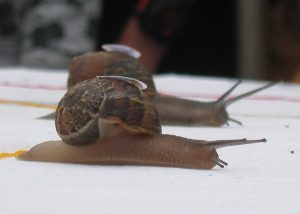 The advertisement won the silver award at the Cannes Lions International Advertising Festival and was self-parodied for their “Extra Cold” campaign several years later.
The advertisement won the silver award at the Cannes Lions International Advertising Festival and was self-parodied for their “Extra Cold” campaign several years later.
The “Grand Championship Snail Race” began in Cambridgeshire in 1992 in the village of Snailwell as part of its annual summer holiday. The event regularly attracts up to 400 people to the village, more than doubling its normal population. The rules are that you’re not allowed to touch your snail during the race, change snails or doing something that would make your snail go faster than it should. The snail has to win the race on its own.
 Most gun lovers have seen just about every gun out there, and I’m pretty sure that the gun lovers I know will most likely know about the Punt Gun. The punt gun gave a whole new meaning to the term packing. A punt gun is a type of extremely large shotgun used in the 19th and early 20th centuries for shooting large numbers of waterfowl for commercial harvesting operations. Punt guns were usually custom designed and so varied widely, but could have bore diameters exceeding 2 inches and fire over a pound of shot at a time. A single shot could kill over 50 waterfowl resting on the water’s surface.
Most gun lovers have seen just about every gun out there, and I’m pretty sure that the gun lovers I know will most likely know about the Punt Gun. The punt gun gave a whole new meaning to the term packing. A punt gun is a type of extremely large shotgun used in the 19th and early 20th centuries for shooting large numbers of waterfowl for commercial harvesting operations. Punt guns were usually custom designed and so varied widely, but could have bore diameters exceeding 2 inches and fire over a pound of shot at a time. A single shot could kill over 50 waterfowl resting on the water’s surface.
The guns were too big to hold and the recoil so large that they were mounted 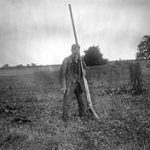 directly on the punts, which is a type of boat used for hunting, hence their name. Hunters would maneuver their punts quietly into line and range of the flock of birds, resting on the water, using poles or oars to avoid startling the birds. Generally the gun was fixed to the punt, so the hunter would maneuver the entire boat in order to aim the gun. The guns were sufficiently powerful, and the punts themselves sufficiently small, so that firing the gun often propelled the punt backwards several inches or more. To improve efficiency, hunters could work in fleets of up to around ten punts. In many ways it was a cruel way to hunt. Waterfowl flocks were severely depleted in the United States, so by the 1860s most states had banned the practice.
directly on the punts, which is a type of boat used for hunting, hence their name. Hunters would maneuver their punts quietly into line and range of the flock of birds, resting on the water, using poles or oars to avoid startling the birds. Generally the gun was fixed to the punt, so the hunter would maneuver the entire boat in order to aim the gun. The guns were sufficiently powerful, and the punts themselves sufficiently small, so that firing the gun often propelled the punt backwards several inches or more. To improve efficiency, hunters could work in fleets of up to around ten punts. In many ways it was a cruel way to hunt. Waterfowl flocks were severely depleted in the United States, so by the 1860s most states had banned the practice.
The Lacey Act of 1900 banned 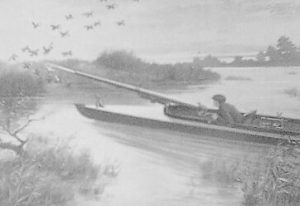 the transport of wild game across state lines, and the practice of market hunting was outlawed by a series of federal laws in 1918. There were still about 50 punt guns in the United Kingdom, as shown by a 1995 survey. The UK limits punt guns to a bore diameter of 1.75 inches by law. Since Queen Victoria’s Diamond Jubilee in 1897 there has been a punt gun salute every Coronation and Jubilee over Cowbit Wash in Cowbit, Lincolnshire, England. During the Diamond Jubilee of Elizabeth II, 21 punt gun rounds were fired separately, followed by the guns all being fired simultaneously. While the original use of punt guns was almost cruel, I suppose their latter uses is a much more noble way to use the guns.
the transport of wild game across state lines, and the practice of market hunting was outlawed by a series of federal laws in 1918. There were still about 50 punt guns in the United Kingdom, as shown by a 1995 survey. The UK limits punt guns to a bore diameter of 1.75 inches by law. Since Queen Victoria’s Diamond Jubilee in 1897 there has been a punt gun salute every Coronation and Jubilee over Cowbit Wash in Cowbit, Lincolnshire, England. During the Diamond Jubilee of Elizabeth II, 21 punt gun rounds were fired separately, followed by the guns all being fired simultaneously. While the original use of punt guns was almost cruel, I suppose their latter uses is a much more noble way to use the guns.
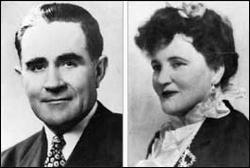 Everyone, at one time or another in their lives has thought about what it might be like to find a hidden treasure. There are many ways that could happen, from a hidden gold mine, to an auction, to the attic, but few can match what it would be like to find a buried treasure in a gold mine. It was the stuff dreams were made of, especially in the Old West. When gold was discovered in California, the Gold Rush started, and while few people ever found their fortune, many people made the journey to try their luck.
Everyone, at one time or another in their lives has thought about what it might be like to find a hidden treasure. There are many ways that could happen, from a hidden gold mine, to an auction, to the attic, but few can match what it would be like to find a buried treasure in a gold mine. It was the stuff dreams were made of, especially in the Old West. When gold was discovered in California, the Gold Rush started, and while few people ever found their fortune, many people made the journey to try their luck.
Victorio Peak was not in California, but it was said to hold a huge cache of gold ingots. The treasure was first discovered by a soldier, who on his death bed in the 1600s, told a monk in a New Mexico monastery about his knowledge of a secret cache of gold ore in the mountains. The monk was Padre Felipe LaRue. LaRue put together a band that purportedly located the mine and successfully drew ore from it for three solid years. When 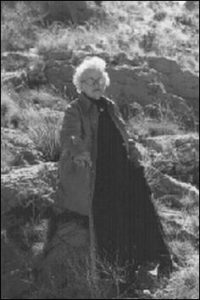 the Mexican Army was sent to overtake LaRue’s operation, he ordered workers to close the entrance to the mine with a landslide and, soon thereafter, LaRue’s entire camp took information about the location with them to the grave at the hands of the soldiers.
the Mexican Army was sent to overtake LaRue’s operation, he ordered workers to close the entrance to the mine with a landslide and, soon thereafter, LaRue’s entire camp took information about the location with them to the grave at the hands of the soldiers.
Fast forward to 1937, when a New Mexico couple named Ernest and Ova Noss were said to have stumbled upon a narrow entrance to this mine while hunting, and then returned several times to collect the heavy gold ingots from the secret location. When Ernest tried to open the mine further with a blast of TNT, it was inadvertently sealed despite repeated attempts to reopen it. When the White Sands Missile and Bombing Range was expanded in 1955 to include the land, Ova Noss supposedly sent a party to investigate and they reported that Army officials were seen digging near the site. Still, the Army never made any mention of the Victorio gold.
In 1977, ground-penetrating radar identified an open area underground near where the Noss’ claim might have been. In the 1990s, a locked steel door was said to have been found covering the site of the original shaft.  Whatever the case may be, a reported 88 solid gold ingots were brought forth from the mountains of New Mexico by the Noss couple, and it is unlikely the public will ever know exactly what became of the site and its associated treasure. Some people think the whole legend is a con, but shortly before her death in 1979, Ova Noss was a the White Sands Missile Range seeking access to her claim. Access was denied, and to this day her family and their organization called The Ova Noss Family Partnership continue to push for access to the mine, although in my mind, it is doubtful that they would find much today, since the mine has been under the exclusive control of the missile base for a long time.
Whatever the case may be, a reported 88 solid gold ingots were brought forth from the mountains of New Mexico by the Noss couple, and it is unlikely the public will ever know exactly what became of the site and its associated treasure. Some people think the whole legend is a con, but shortly before her death in 1979, Ova Noss was a the White Sands Missile Range seeking access to her claim. Access was denied, and to this day her family and their organization called The Ova Noss Family Partnership continue to push for access to the mine, although in my mind, it is doubtful that they would find much today, since the mine has been under the exclusive control of the missile base for a long time.

